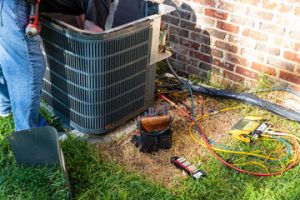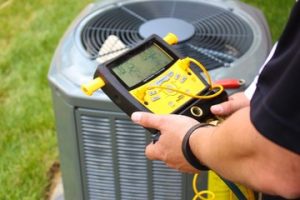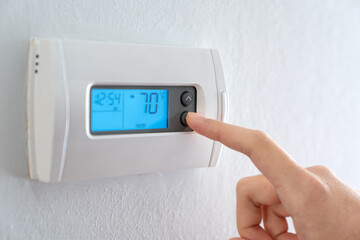Heating, ventilation, and air conditioning (HVAC) systems are essential for creating comfortable, safe, and energy-efficient indoor environments. Whether in residential homes, commercial spaces, or industrial facilities, a well-maintained HVAC system ensures consistent temperatures, proper air circulation, and improved indoor air quality. To achieve these benefits, property owners rely on top-rated HVAC Round Rock services that provide professional installation, repair, maintenance, and upgrades.

Expert HVAC care not only enhances comfort and system performance but also reduces energy costs and prolongs the life of equipment. This comprehensive guide explores the importance of professional HVAC services, common system challenges, maintenance strategies, and the advantages of working with trusted experts.
The Importance of Professional HVAC Services
HVAC systems are complex networks of mechanical, electrical, and ductwork components that must work in harmony to maintain indoor comfort. The main components include heating units such as furnaces or boilers, cooling units like air conditioners or heat pumps, ventilation ducts, thermostats, and filtration systems. Any malfunction in these components can lead to discomfort, increased energy consumption, or even safety hazards.
Professional HVAC services ensure that each component functions optimally. Skilled technicians provide accurate diagnostics, effective repairs, and system optimization, ensuring that heating, cooling, and ventilation operate efficiently. These services are essential for:
- Residential Comfort: Maintaining consistent indoor temperatures, controlling humidity, and improving air quality in homes.
- Commercial Productivity: Ensuring a safe, comfortable, and healthy environment for employees and customers in offices, retail spaces, and industrial facilities.
- Energy Efficiency: Reducing utility costs by optimizing system performance and addressing inefficiencies.
Investing in professional HVAC services is a long-term solution for comfort, safety, and cost savings.
HVAC Installation Services
Proper installation is crucial to achieving reliable HVAC performance. Expert HVAC services offer professional installation for both new systems and replacements, ensuring that units operate efficiently from the start.
- System Assessment: Technicians evaluate the property’s size, insulation, layout, and heating/cooling needs to determine the appropriate system capacity. Correct sizing prevents issues such as short cycling, uneven temperatures, and excessive energy usage.
- Equipment Selection: Experts guide property owners in choosing high-efficiency units and energy-saving components that match their comfort requirements and budget.
- Professional Installation: Installation requires precision to ensure optimal airflow, proper duct alignment, and correct electrical connections. Expert HVAC technicians adhere to industry standards and manufacturer guidelines to guarantee system reliability.
- Smart Controls and Zoning: Modern installations often include programmable thermostats and zoning systems for customized temperature control. This enhances comfort, reduces energy waste, and allows for remote management of the HVAC system.
A professionally installed HVAC system maximizes energy efficiency, provides consistent comfort, and reduces the likelihood of future repairs.
HVAC Repair Services
Even well-maintained HVAC systems can develop issues over time. Prompt repairs by skilled technicians restore performance and prevent further damage. Common HVAC problems include:
- Inconsistent Heating or Cooling
- Uneven temperatures across different rooms may result from blocked vents, malfunctioning thermostats, or ductwork imbalances. Experts diagnose and correct these issues to restore consistent indoor comfort.
- Clogged or Dirty Filters
- Filters trap dust, allergens, and airborne particles to maintain clean air. Over time, they become clogged, reducing airflow and efficiency. HVAC professionals replace or clean filters to restore optimal system performance.
- Refrigerant Leaks
- Air conditioning units rely on refrigerant for cooling. Low refrigerant levels due to leaks reduce efficiency and strain the compressor. Technicians locate leaks, repair affected components, and recharge refrigerant to proper levels.
- Electrical Issues
- Faulty wiring, blown fuses, or malfunctioning capacitors can disrupt HVAC operation. Professionals safely repair electrical components to restore reliable performance.
- Strange Noises and Odors
- Buzzing, rattling, or grinding sounds often indicate mechanical or electrical problems, while unusual odors may signify mold or debris accumulation. Experts identify the source and perform necessary repairs or cleaning.
- Water Leaks or Ice Formation
- Condensation leaks or ice buildup on coils often signal airflow or drainage issues. Technicians correct these problems to prevent equipment damage and maintain system efficiency.
Timely HVAC repairs improve comfort, enhance performance, and reduce the likelihood of costly system replacements.
Preventive HVAC Maintenance
Routine maintenance is essential to keep HVAC systems operating efficiently and reliably. Preventive maintenance identifies potential issues before they escalate, extends equipment lifespan, and improves energy efficiency.
Key maintenance tasks include:
- Filter Replacement or Cleaning: Ensures proper airflow, enhances indoor air quality, and reduces strain on the system.
- Coil Cleaning: Dirt on evaporator and condenser coils decreases heat transfer efficiency. Cleaning coils improves performance and energy savings.
- Refrigerant Checks: Maintaining optimal refrigerant levels supports efficient cooling and protects the compressor.
- Electrical Inspections: Regularly checking wiring, capacitors, and connections prevents electrical failures and ensures safe operation.
- Ductwork Evaluation: Sealing leaks, insulating ducts, and optimizing airflow maintain balanced temperatures and reduce energy waste.
Many HVAC providers offer seasonal maintenance plans, scheduling inspections before peak heating or cooling periods. These plans help prevent emergency repairs, enhance energy efficiency, and maintain consistent indoor comfort year-round.
Enhancing Energy Efficiency
Energy efficiency is a significant benefit of expert HVAC services. Proper maintenance and timely repairs reduce energy consumption while maintaining optimal comfort. Strategies include:
- Leak Repairs: Fixing leaks in ducts or refrigerant lines prevents wasted energy.
- Component Optimization: Cleaning or replacing coils, filters, and worn mechanical parts improves performance.
- Smart Thermostats: Programmable or smart thermostats optimize HVAC operation according to occupancy, schedules, and weather conditions.
- High-Efficiency Upgrades: Replacing older components with energy-efficient alternatives reduces operational costs and environmental impact.
Energy-efficient HVAC systems deliver reliable comfort while lowering utility bills and reducing the carbon footprint.
Improving Indoor Air Quality
Indoor air quality is a critical component of a healthy and comfortable environment. HVAC systems play a vital role in circulating clean air, controlling humidity, and removing airborne contaminants. Professional HVAC services enhance indoor air quality by:
- Installing Advanced Filtration: High-quality filters capture dust, allergens, and fine particles.
- Humidity Management: Properly controlled humidity prevents mold growth and reduces allergens.
- Air Purification Systems: HEPA filters, UV lights, and ionizers remove pollutants, providing healthier air for occupants.
Improved indoor air quality supports occupant health, increases comfort, and maintains HVAC system efficiency.
Residential and Commercial HVAC Services
Residential HVAC Services
Homeowners benefit from expert HVAC services through consistent indoor temperatures, improved air quality, and energy savings. Professional maintenance, repairs, and upgrades ensure year-round comfort and reliable system performance.
Commercial HVAC Services
Businesses require dependable HVAC systems to maintain employee productivity, protect equipment, and provide a comfortable environment for clients. Expert commercial HVAC services include system design, installation, preventive maintenance, and energy efficiency upgrades for large or complex spaces.
Both residential and commercial properties gain from professional HVAC services that ensure reliability, efficiency, and comfort.
Signs You Need Expert HVAC Services
Property owners should be alert to warning signs that HVAC services are required, including:
- Uneven or inconsistent indoor temperatures
- Unusual sounds or odors from the system
- Water leaks or ice buildup
- Frequent cycling or short-cycling
- Rising energy bills despite normal usage
- Reduced indoor air quality
Early intervention by professional HVAC technicians prevents minor problems from escalating, maintains system efficiency, and ensures continuous comfort.
Choosing a Top-Rated HVAC Service Provider
Selecting the right HVAC provider is essential for long-term system performance and peace of mind. Consider the following factors:
- Experience and Expertise: Technicians should have extensive knowledge of various HVAC systems and brands.
- Comprehensive Services: Providers should offer installation, repair, maintenance, and upgrades.
- Quick Response: Fast service minimizes downtime and maintains comfort.
- Quality Parts and Equipment: Using high-quality components ensures long-lasting repairs.
- Maintenance Plans: Scheduled preventive maintenance helps prevent costly repairs and maintains energy efficiency.
Top-rated HVAC providers ensure consistent comfort, improved air quality, and reliable heating and cooling for both residential and commercial spaces.
Top-rated HVAC services are vital for maintaining comfort, performance, and energy efficiency in homes and businesses. Professional installation, prompt repair, and routine maintenance ensure systems operate reliably, extend equipment lifespan, and improve indoor air quality.
Routine preventive care prevents minor issues from becoming major problems, enhances energy efficiency, and supports consistent indoor comfort. Upgrades such as energy-efficient components, smart thermostats, and advanced filtration systems further improve performance and reduce operating costs.
Investing in expert HVAC services guarantees reliable heating, cooling, and ventilation throughout the year. Whether for residential or commercial spaces, professional HVAC care is an essential investment in comfort, efficiency, and a healthier indoor environment.


